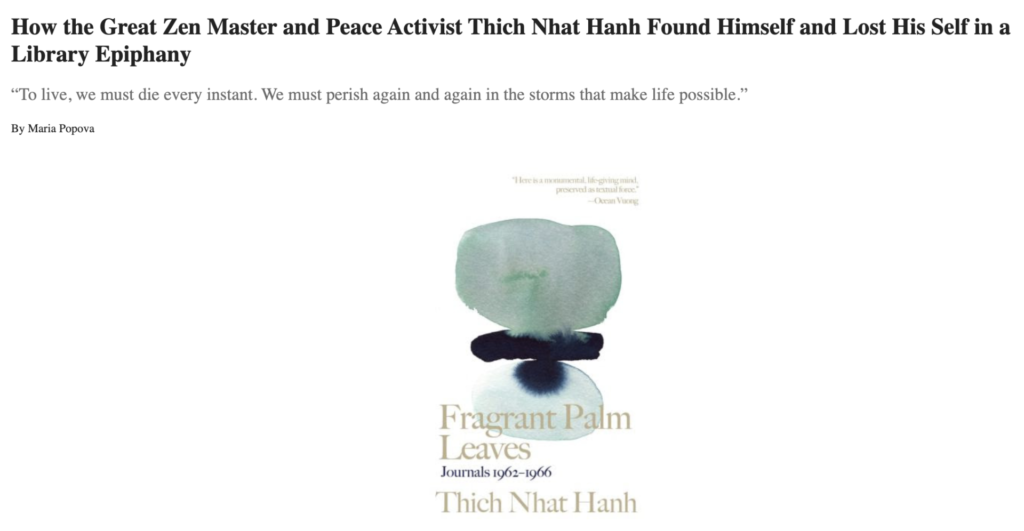Remaining Steadfast and Equanimous in the Parable of the Pearl in the Topknot
In Chapter Nine of the Lotus Sutra, the Buddha extols the paramount importance of courage and tenacity. The post Remaining Steadfast and Equanimous in the Parable of the Pearl in the Topknot appeared first on Tricycle: The Buddhist Review.

The Parable of the Pearl in the Topknot is told in Chapter Fourteen of the Lotus Sutra, in the section on “Peaceful Practices.” In this instance, the character for “peaceful” can also be read as “equanimous.” Pearl is one of the seven jewels decorating the great stupa, which arises from within the earth in Chapter Eleven of the Lotus Sutra. Each of these seven jewels adorning the great stupa is associated with one of the seven factors of awakening. Pearl is associated with “concentration,” the others are as follows:
Gold—Mindfulness
Silver—Investigation
Lapis Lazuli—Energy
Agate—Rapture
Seashell—Tranquility
Carnelian—Equanimity
While often overlooked due to its perceived simplicity, this parable offers us encouragement to strive hard with all our abilities to seek awakening, reinforcing the Buddha’s last words, as told in the Mahaparinibbana Sutta: Last Days of the Buddha, DN 16:
“Behold, O monks, this is my last advice to you. All component things in the world are changeable. They are not lasting. Work hard to gain your own salvation.”
This parable is a great example that the wisdom of the earliest Sravakayana (“lesser vehicle”) sutras can be found within the later Mahayana (“great vehicle”) sutras, confirming these two streams are not separate and distinct and are, in fact, beautiful expressions of the same origination.
As the last few installments of this series have suggested, one of the keys to unlocking these parables is considering who is speaking and to whom. These buddhas, bodhisattvas, arhats, beings, etc., are archetypes and role models. They represent various strengths and weaknesses and, as such, are examples of qualities we all have within.
In the Parable of the Pearl in the Topknot, Shakyamuni is speaking to Manjushri about a wheel-turning king who rewards his soldiers for distinguishing themselves in battle with fields, houses, robes, gold, silver, and other treasures. Finally, to the bravest of them all, he gives the bright pearl from his topknot. Shakyamuni, the Dharma King, also gives his greatest dharma warrior a precious pearl, rewarding him for being the role model for us all to be relentlessly tenacious in our practice of seeking awakening.
Manjushri is a prominent bodhisattva in Mahayana Buddhism, renowned for his wisdom and intelligence. Along with Samantabhadra, he is one of Shakyamuni’s two attendants in Mahayana scripture. He is often depicted riding on a blue lion, wielding a sword to cut through ignorance and holding a book to represent knowledge. Nothing can withstand the roar of his lion, which represents the intensity of enlightenment, as well as samvega, or the wise urgency to seek the spiritual path. Manjushri’s sword of wisdom cuts through all delusions. He is revered for his understanding, clarity, and the realization of the true nature of reality. In Western traditions, Manjushri could be compared with the Archangel Uriel, who is generally associated with wisdom, enlightenment, and knowledge.
The traditional explanation of this parable is that Shakyamuni is comparing the pearl in the topknot to the Lotus Sutra. The Buddha is the King of the Dharma, whose previous preparatory teachings were skillful means. Now that his followers are victorious against the forces of Mara—ignorance, hatred, and greed—and can clearly see the truth of emptiness, he gives them the Lotus Sutra.
The image of the precious pearl in the topknot is shared across Buddhism. Most statues of Buddha have a precious jewel in their hair or on top of their head. In the Dignified Conduct fascicle of the Shobogenzo, Dogen writes about this bright jewel, describing awakening and the mutual possession of the ten realms:
“At this very moment, the bright jewel hangs in the empty sky or is sewn inside the robe; or is it stored under the dragon’s jaw or in the king’s hair topknot. Each and every one of them is nothing other than the bright jewel of the entire ten-direction world.”
And yet the Buddha’s use of an analogy of battle and war is perhaps quite jarring. Isn’t Buddhism a religion of peace? Isn’t our goal to let go of attachments and sit with tranquility?
While the Buddha did not advocate for violence, he did advocate for strength and perseverance. Just look at the words of his last days, when, using his last breaths, he instructed his followers to “work hard.” The Seven Factors of Awakening do not include acceptance and acquiescence. Buddhism’s greatest ambition is awakening (bodhicitta). Bodhicitta takes great effort to manifest. It is, for all intents and purposes, a battle. A battle against our own ignorance, hatred, and greed. Who hasn’t felt an inner struggle just to get to the cushion? A battle to sit there for the full duration? A battle to corral our wandering mind? Over and over and over again. I know, for me, sometimes, it feels very much like a battle.
The Lotus Sutra says, “Manjushri, the Tathagata is also like this … the Mara kings are unwilling to submit … so the Tathagata’s generals, the wise sages, do battle with them … against the Mara of the five aggregates, the Mara of delusions, and the Mara of death.”
The metaphor of battle can be taken too far though. Struggle without compassion leads to extremism and injury, to ourselves and others. This is one reason we see Shakyamuni paired with his two attendants: Manjushri and Samantabhadra. Manjushri is resolute in courage and tenacity, while Samantabhadra is associated with compassion and loving-kindness. These two sides of the spectrum bring balance and harmony into our practice.
Our goal is not to withdraw from the world, to retreat into a forest, or sit facing a wall until our legs fall off. Our goal is to awaken, to engage with the world in mindful and compassionate ways, manifesting our buddhanature, creating the Pure Land in and around us no matter what obstacles we face or how hard it is. From Chapter Fourteen’s section on Happy Dwelling Conduct:
“Manjushri, this Dharma Flower Sutra, the hidden treasury of the buddha-tathagatas, is supreme among all sutras. I have guarded and protected it throughout the long night, never recklessly proclaiming it. On this day, for the first time, I reveal and expound it for you.”
The Buddha gives the pearl to Manjushri, the bravest of all. Manjushri is our role model and guide—our inspiration to be brave and resolute, for us to never stop trying, to never give up. For in the long night, it gets very hard indeed. The line “throughout the long night” is the Great Doubt—that perilous time in all our practices when we doubt and lose sight of what we are doing. The parable encourages us to be brave, resolute, and hold firm, to remain strong and mindful.
Nichiren Buddhism pairs this chapter, “Peaceful Practice,” with Chapter Thirteen’s “Encouragement to Hold Firm.” Nichiren felt that both spoke to our personal practice, but again, the character used for “peace” can also be translated as “equanimity.” Huisi (515–577), Zhiyi’s teacher, described equanimity as “practice without characteristics,” meaning a meditation that is not defined by a specific posture or ritual setting but that can be carried out in the course of whatever one may be doing.
The Lotus Sutra is sometimes described as the Teaching of Equality because in it we learn that all the arhats, pratyeka-buddhas, and bodhisattvas—all Buddha’s disciples, monks, nuns, laymen, and laywomen—are, in fact, already bodhisattvas. Everyone has this precious jewel of buddhanature within them and will become buddhas. All people, all beings, sentient and insentient, and the rivers, the mountains, and the earth itself are all in the house of the Buddha. Everything is equal. This is poignantly shown in this parable when the Buddha hands his pearl to Manjushri, showing that now they are the same, both victorious against the forces of Mara and both awakened, showing that there can be more than one buddha in the world at any time.
We are encouraged to hold firm, remain equanimous, and to have confidence in the precious pearl. Through our steadfast practice, we can cultivate the seven factors of awakening and manifest the Buddha Way.
♦
Translation from The Threefold Lotus Sutra, A Modern Translation for Contemporary Readers. Translated by Michio Shinozaki, Brook A. Ziporyn, and David C. Earhart. Published by Kosei Publishing, 2019.
“Yet only to the most courageous hero,
Who has done the most difficult deeds,
Does the king present the bright pearl
Taken from his topknot,
And the Tathagata does likewise.
He is master of all teachings,
Who has great powers of forbearance
And a treasury of wisdom,
And who uses his great compassion
In transforming the world to accord with the Dharma.
He sees all people
Suffering from afflictions and distress,
Seeking liberation,
And battling the maras.
He explains various teachings
For these living beings
And expounds these sutras to them
With great skillful means.
When he knows that these living beings
Have come into possession of their powers,
At last he teaches them
The Dharma Flower.
This is just like the king making a gift
Of the bright pearl from his topknot.
This sutra is preeminent
Among all sutras,
And I have always guarded and protected it,
Never injudiciously revealing it.
Now indeed is the time
To teach it to you.”

 Fransebas
Fransebas 




























![Is Your SEO Strategy Built for the AI Era? [Webinar] via @sejournal, @hethr_campbell](https://www.searchenginejournal.com/wp-content/uploads/2025/07/6b-240.png)


